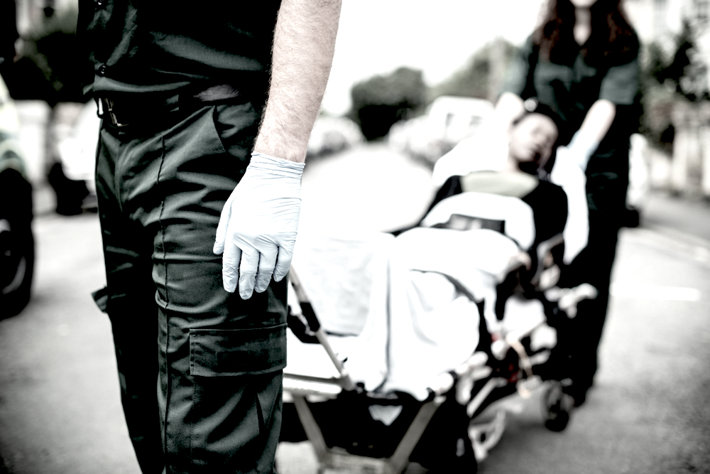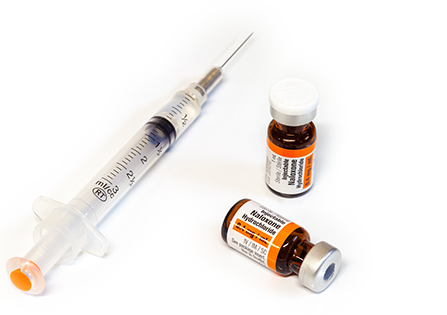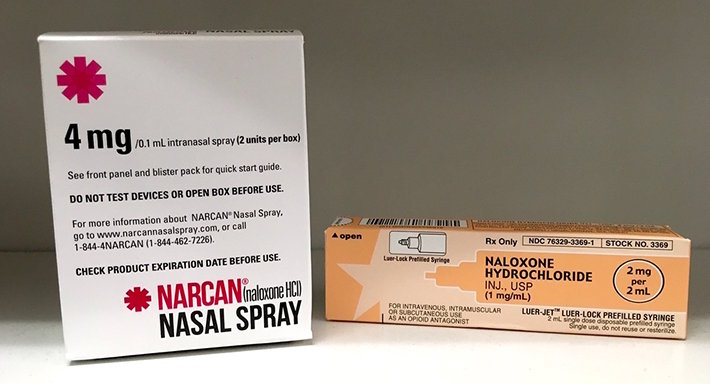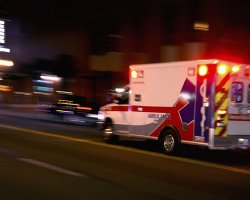Do Americans Need to Carry Overdose Prevention Drugs?

In August of 2018, the National Institute on Drug Abuse published the CDC’s statistics for American drug overdose deaths for 2017. According to the research, more than seventy-two thousand people died from drug overdoses in 2017 alone, a new highest-ever in overdose deaths. Also according to the NIDA research, the common, high-strength opioid pain reliever fentanyl was present in nearly half of all overdose deaths for 2017.
It is no mystery that the United States is struggling with several drug problems at this time, but none are as significant as the opioid epidemic. In fact, the opioid epidemic is responsible for the majority of the drug problem. So when the Surgeon General gave an official public announcement that all Americans should carry naloxone, much of America agreed with him and saw the logic in that strategy.
What is Naloxone?

Before we examine the Surgeon General’s advisement and how we would implement it, let’s first examine naloxone itself and what this medicine has to offer to the American people.
Naloxone has been in use for twenty-plus years, allowing first responders and medical personnel to save tens of thousands of lives. When naloxone is administered to an overdosing patient, the emergency medicine can reverse the effects of an opioid overdose and quite literally bring the person back from the brink of death.
Naloxone comes in two different types. One version of the medicine appears in an injectable device, not all that dissimilar to an EpiPen. The other version of the medicine a nasal spray. The nasal spray applicator is the more common of the two and is often preferred as it takes no special training or instruction to learn how to administer it.
Naloxone is effective in blocking the effects of opioids on the breathing and heart rate of users. When a drug user is experiencing an opioid overdose, the effects of opioids on the brain gradually spread, creating harmful effects on the cardiovascular and respiratory functions. Heart rate slows, as does breathing. When naloxone is administered, the medicine travels rapidly through the body, increasing heart rate and respiratory function and essentially “waking up” the drug user.
Naloxone can be used to prevent overdoses from drug users who use heroin, oxycodone, hydrocodone, hydromorphone, methadone, morphine, fentanyl, codeine, buprenorphine, and any other opioid-based drug. Naloxone is now legal for medical use both by medical professionals and civilians alike.
What Does the Surgeon General Say About It?
Even before NIDA released overdose statistics for 2017, the U.S. Surgeon General was making announcements and encouraging Americans to carry naloxone. In April of 2018, Dr. Jerome M. Adams, Surgeon General, issued a national advisory to the American people, insisting that we all work together as a unified nation to reduce the death toll of Americans from overdoses.
Dr. Adams’s advisory was the first of its kind since 2005, underscoring the sheer urgency of just how badly we need to start addressing the opioid epidemic with increased vigor. Opioids have killed more than two-hundred and fifty-thousand people since 2008. More than forty-nine thousand Americans lost their lives from opioid overdoses in 2017, and more than forty-two thousand died from opioids in 2016.
“Each day we lose 115 Americans to an opioid overdose — that’s one person every 12.5 minutes. It is time to make sure more people have access to this lifesaving medication…”
Dr. Adams spoke passionately in his advisory, saying that “Each day we lose 115 Americans to an opioid overdose — that’s one person every 12.5 minutes. It is time to make sure more people have access to this lifesaving medication, because 77 percent of opioid overdose deaths occur outside of a medical setting and more than half occur at home.”
In Dr. Adams’s advisory, he also discussed how naloxone is already being carried by tens of thousands of American first responders and medical experts nationwide. He also mentioned that many American cities do their best to make naloxone available at reduced costs for anyone who wants it. But the Surgeon General emphasized that those efforts are still not enough to make the life-saving medicine universally available.
We can agree with the Surgeon General's viewpoint on the importance of protecting and saving lives. But unfortunately, Dr. Adams did not give strategies in his national advisory on how we would go about implementing naloxone preparedness into the lives of day-to-day Americans. He also did not discuss the extreme need for treatment of drug users through inpatient drug addiction rehabilitation centers. The Treatment Gap (not enough addicts having access to rehab) is the real reason why our nation has so many addicts, not a lack of naloxone.
Controversy Over Naloxone Availablity
The use and availability of naloxone is not without its own controversy. There are those who believe that we should not make naloxone sweepingly available, as they believe that such efforts will simply inspire addicts to use drugs more. The concept here is that addicts will think that they will be revived if they do overdose, thus reducing some of the perceived risks in drug use.
And the controversy over naloxone is not just a moral dilemma. It’s also a funding issue. The City of Baltimore, Maryland has suffered immensely due to opioid overdoses in the last several years. In Baltimore, the scarcity of naloxone is a problem of funding and availability, not moral disagreement.

Dr. Leana Wen, the official health commissioner for Baltimore, spoke out on this issue, say her team literally has to ration naloxone to locals, as the city cannot afford to stockpile the life-saving medicine as much as they'd like to. Dr. Wen demanded that the Trump Administration negotiate with the makers of naloxone to reduce the prices of naloxone and to make the medicine more available, but her appeals for help have been as yet unanswered.
“Every week, we count the doses we have left and make hard decisions about who will receive the medication and who will have to go withoutn…”
Clearly, our nation is not getting enough access to naloxone and, just as clearly, that is a problem.
If You Have to Respond to an Overdose…

If you ever have to respond to an overdose, you are going to want to have this life-saving medicine within reach. Naloxone is simple enough and quite easy to use, and it can mean the difference between a life and a death. It takes seconds to apply naloxone, and it can literally bring an addict back from the brink of death.
Even if you don’t know someone who is addicted to opioids, it would be wise to add this life-saver to your personal first aid kit, the glove compartment of your car, your medicine cabinet at home, etc. The truth is, having this medicine at hand could mean the difference between saving a life and watching someone die.
Sources:
- https://www.drugabuse.gov/related-topics/trends-statistics/overdose-death-rates
- https://www.webmd.com/mental-health/addiction/drug-overdose-naloxone#1
- https://www.nytimes.com/2018/04/05/health/opioids-naloxone-surgeon-general.html


 ®
®